As we near the 79th anniversary this year of the Dieppe Raid (August 19th, 1942), I wanted to post an update to my first article written on Dieppe back in November, 2017.
In that post I wrote about an incredible email I had received back in May, 2016, by Richard Tomkies, a professional writer and TV producer based out of Vancouver, British Columbia.
Over several years, Mr. Tomkies had gathered an incredible amount of information about Dieppe, sparked while researching and scripting the ‘real reason’ the Alaska Highway was built in a TV documentary, “The Great Road” featuring Leslie Nielsen.


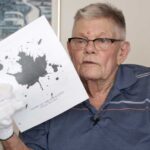
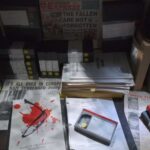
Finding “a slight but reasoned connection with ‘The Raid’.” Mr. Tomkies followed it, making valuable ‘contacts’ in Moscow, Washington DC, Paris, to Sir William Stevenson’s (Intrepid’s) wife in the Bahamas and his namesake biographer in Thailand.
In 1992, Richard, along with his daughter, was on hand for the 50th Anniversary commemorations in Dieppe, where he hired a moonlighting BBC crew to record the people and events for a week in France. (Excerpts of these interviews can be seen at the end of this article below).
However, time soon caught up to Richard; “After an extensive, disappointing effort to raise production funding – and with interest in “The Raid” waning after its 50th Anniversary – my plans for funding a major documentary were, sadly, unrealized. The Dieppe material has languished in storage, unseen and unused, ever since. I still wish I had written and produced the show; alas, too old and frail, to do so now!”
When Richard reached out to me back in 2016, my initial thought was in securing the veteran interviews he performed during the 50th in France. Sadly both the War Museum, and Library & Archives declined to acquire this material. Thinking an in-person video interview of Richard might help, I decided to fly out to Vancouver, B.C. and have him tell his story on camera.
In the video, I begin by describing briefly, the involvement of the Canadian Army Film Unit, and its lack of film coverage of the Dieppe raid, based in large part by documentation I had come across at Library & Archives Canada. Supporting this, I have decided to share those documents here for the first time.
Presented in chronological order, the documents convey the frustration and pride of the Canadian Army Film & Photo Unit as it strives to prepare itself for when it is finally called upon to go into action.
It must be noted that there are still several Public Relation Group files within Library & Archives Canada, designated, ’32: Restricted by law’.
“Library and Archives Canada (LAC) controls archival records from other federal government departments. Some of these archival records are restricted by law. You may view restricted records as a departmental researcher after you get permission from the department that created the records.”
Much like Richard Tomkies, it is possible that some of the PRO files related to Dieppe, are still restricted under the Official Secrets Act, or as in this case, Access to Information Act here in Canada.
Whatever the case may be, I still think the documents presented here, will prove to be an interesting and revealing look inside the Canadian Army Film & Photo Unit, at a time when the Film Unit was, “…ready to take its place in the field whenever Canadian troops go into action.” – Lieut. J.E.R. McDougall.
Dated May 7th, 1942, this incredible document from Cpl. Alan Grayston to Lieut. J.E.R. McDougall, describes Cpl. Grayston’s recommendations as he trains with a British Commando Unit off the coast of Scotland. I was not expecting to see the detailed sketch on page three, of a fully equipped CFPU combat cameraman, carrying his tripod and camera…
“On the 14 April 1942 I was attached to the 2nd Division A.L.C. Training School in order to find out how well a cameraman can cooperate with the Commandos in actual battle conditions.”
“In general, my experience goes to show that in a raid a cameraman can get very good results, provided that he has every opportunity given him to be in the places where action is going on. This can only be done with complete cooperation between the cameraman and the leaders of the expedition.”
– Cpl. Grayston
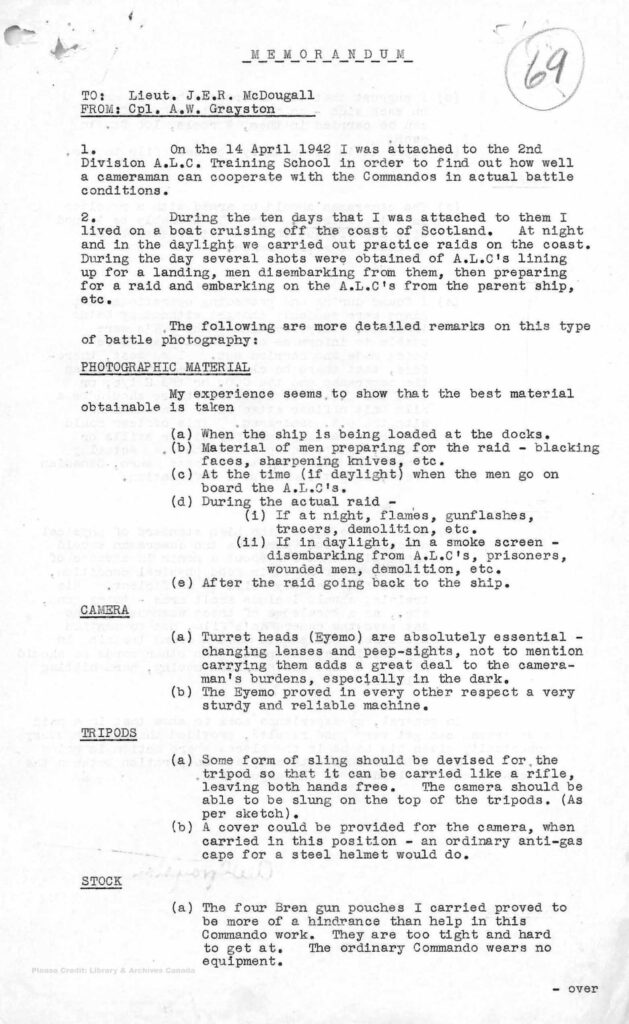
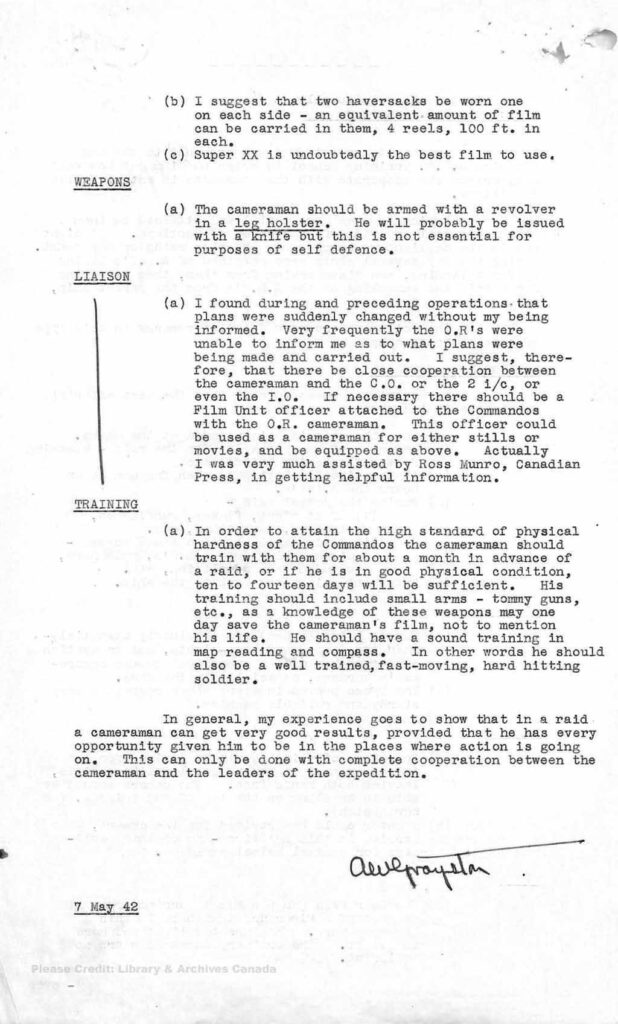
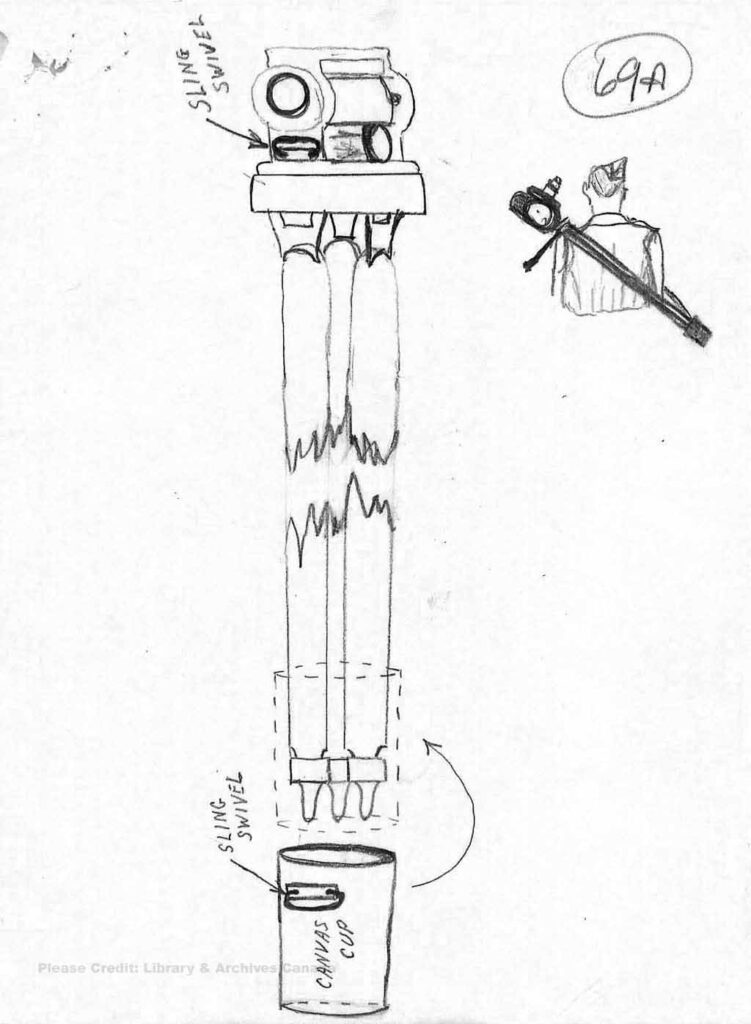
In this letter dated July 23rd, 1942, Lieut. McDougall informs the P.R.O. HQ that the Film Unit is now,
“…in a position to put three cameramen into the field should any operations take place.” – Lieut. McDougall
Less than a month later, and one day after the Dieppe Raid, August 20th, 1942, Lieut. J.E.R. McDougall, wrote a scathing memorandum to the Public Relations Office C.M.H.Q., decrying a lack of CFPU coverage and participation during the Dieppe Raid;
“I have had no explanation from P.R.O Army, and can conceive of none, why our cameraman, Pte. Cooper was returned to C.M.H.Q., after having been requested, and when an operation was impending. In any event, we should have been asked to supply three cameramen rather than one. Where the fault lies I have no way of knowing, but the fact remains that we had a definite job to do, we were trained, prepared and equipped to do it, and when the time came to do it we were deliberately ignored.” – Lieut. J.E.R. McDougall.
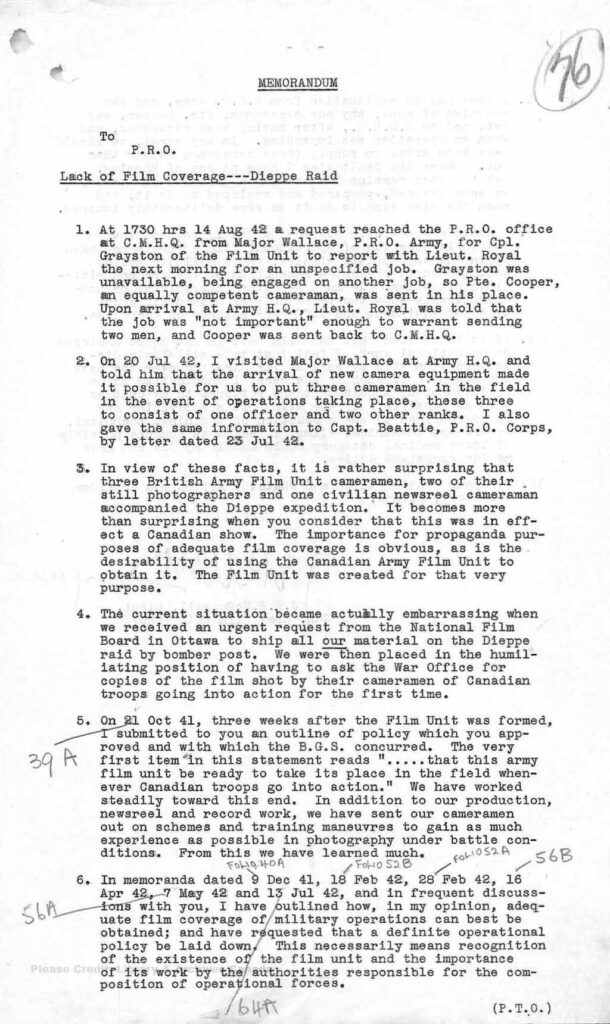
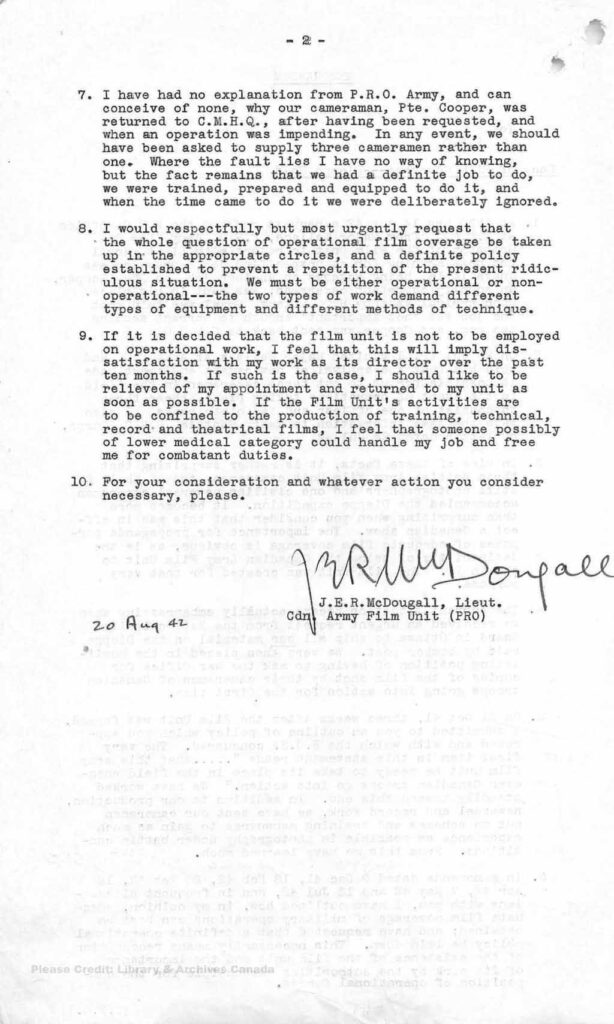
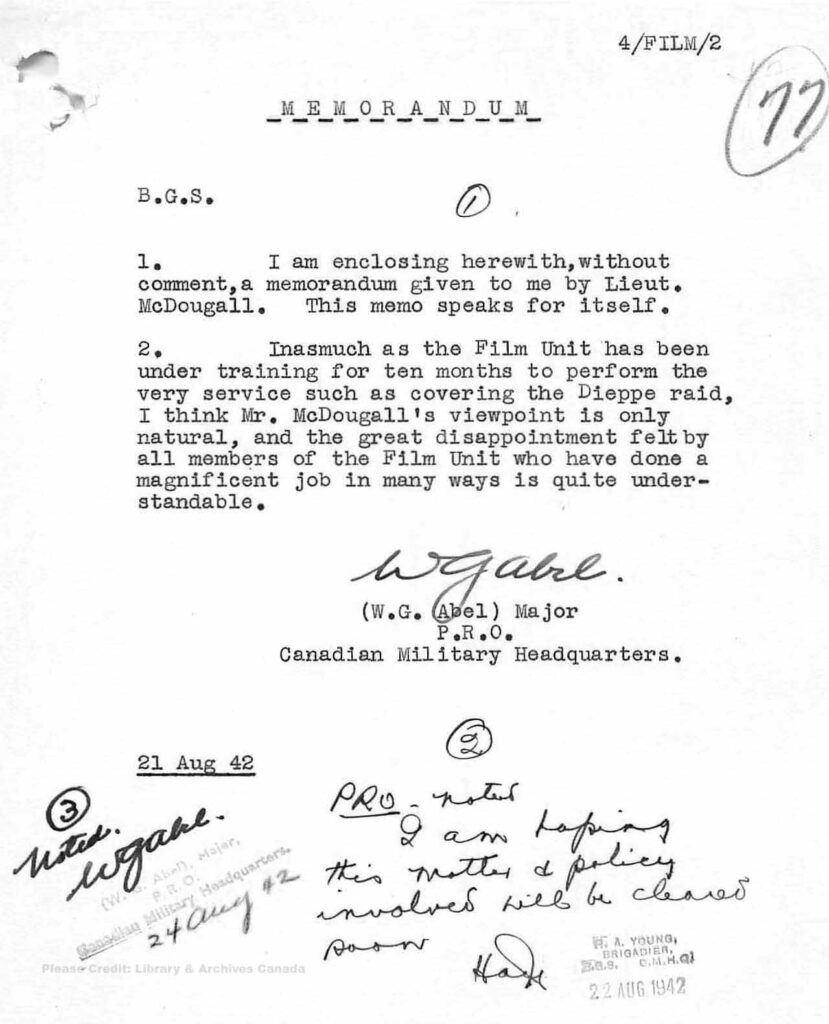
One day after Lieut. McDougall sent that letter to P.R.O. Headquarters, Major Abel forwarded it to B.G.S. (Brigadier General Staff);
“I am enclosing herewith, without comment, a memorandum given to me by Lieut. McDougall. This memo speaks for itself.” – Major Abel
Confusion would follow this Message, dated August 25th, 1942, when the National Film Board of Canada, upon receiving film material, responded…
“NO ACTION SHOWN INCLUDED”
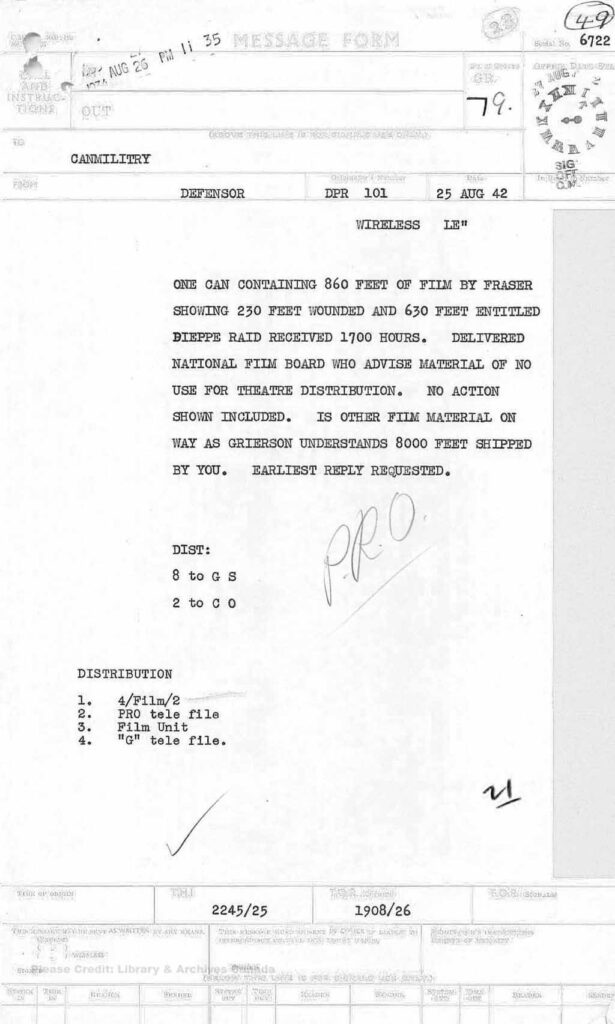
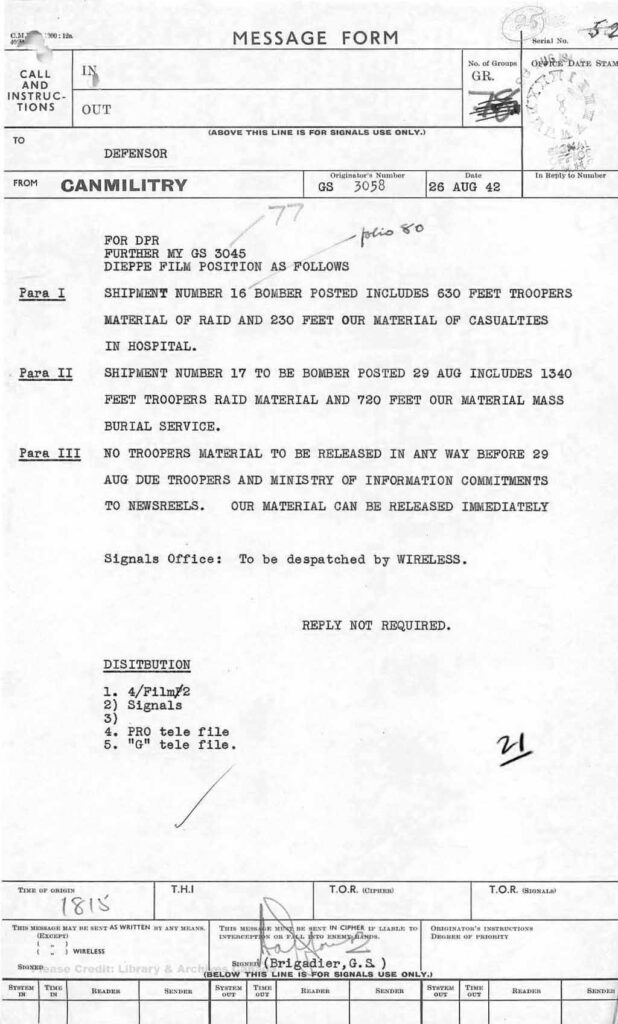
In a follow-up Message, additional material was being sent…
“SHIPMENT NUMBER 17 TO BE BOMBER POSTED 29 AUG INCLUDES 1340 FEET TROOPERS RAID MATERIAL AND 720 FEET OUR MATERIAL…”
Embarrassment would follow confusion when on August 27th, 1942 this Message would clarify whose footage was shot on operations.
“All / DIEPPE FILM ON OPERATIONS WAS SHOT BY TROOPERS AND BRITISH MOVIETONE NEWS NONE BY US.”
By September 4th, 1942,
“All Dieppe film material supplied to you has been released…
Also within the Public Relations Group Archives, I came across this editorial from the Motion Picture Herald, September 19th, 1942 – although the Herald is freely available online, I was unable to locate this exact editorial within any editions of the magazine, possibly written by Terry Ramsaye, the Herald Editor at the time.
The link to the Sept-Oct 1942 editions can be found online here;
https://archive.org/details/motionpictureher1481unse
“Meanwhile, the newsreels, in these United States anyway, were supplied with pictures of the coming and the going at Dieppe, but not action ashore. Reporters for the press, however, did go ashore and came back with word pictures. If any motion picture cameras landed, nothing has been heard from or of them. This procedure, or the lack of it, seems the more apparent because the Dieppe raid was an Allied show with joint action by British, Canadian and American forces. Whatever else may have been among the military objectives, it was a spectacular device for making a story of aggression and victory. The screen, the newsreel screen, is a great medium for just that.” – Motion Picture Herald, September 19th, 1942
In this Memorandum, dated September 30th, 1942, Lieut. J.E.R. McDougall adds the following remarks, addressed to Major W.G. Abel;
“These notes are submitted in the hope that there may be no repetition of the film arrangements made for the Dieppe raid, and that in future operations the Film Unit will be allowed to secure proper coverage. ” – Lieut. J.E.R. McDougall
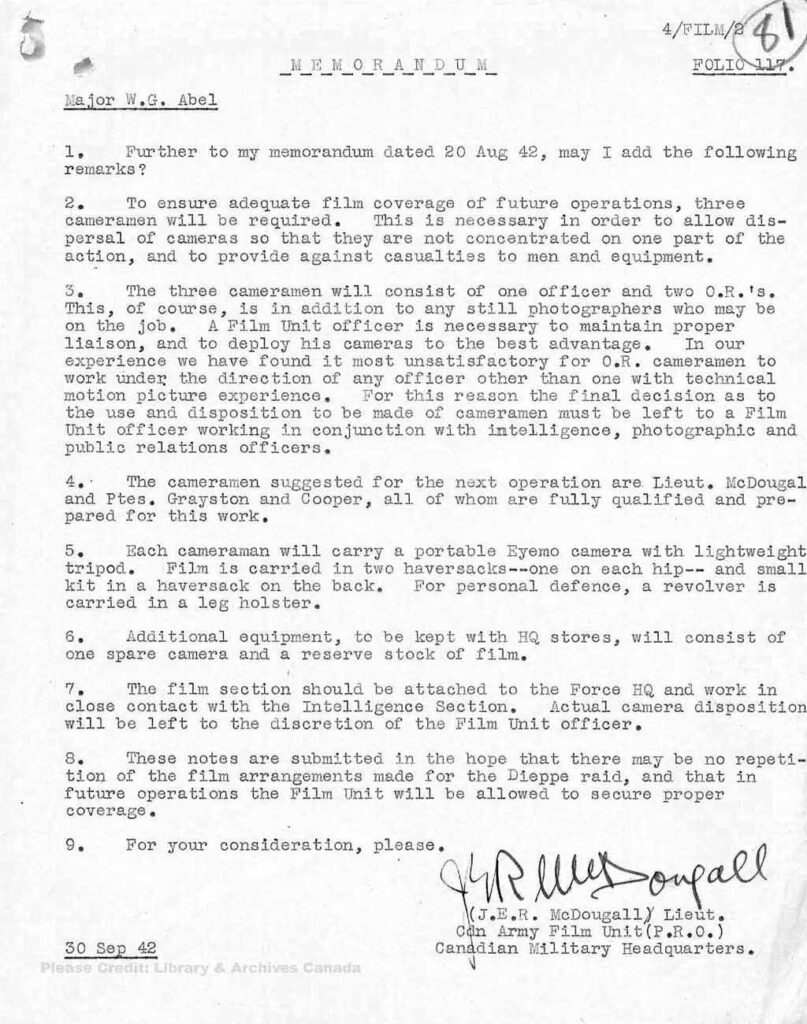
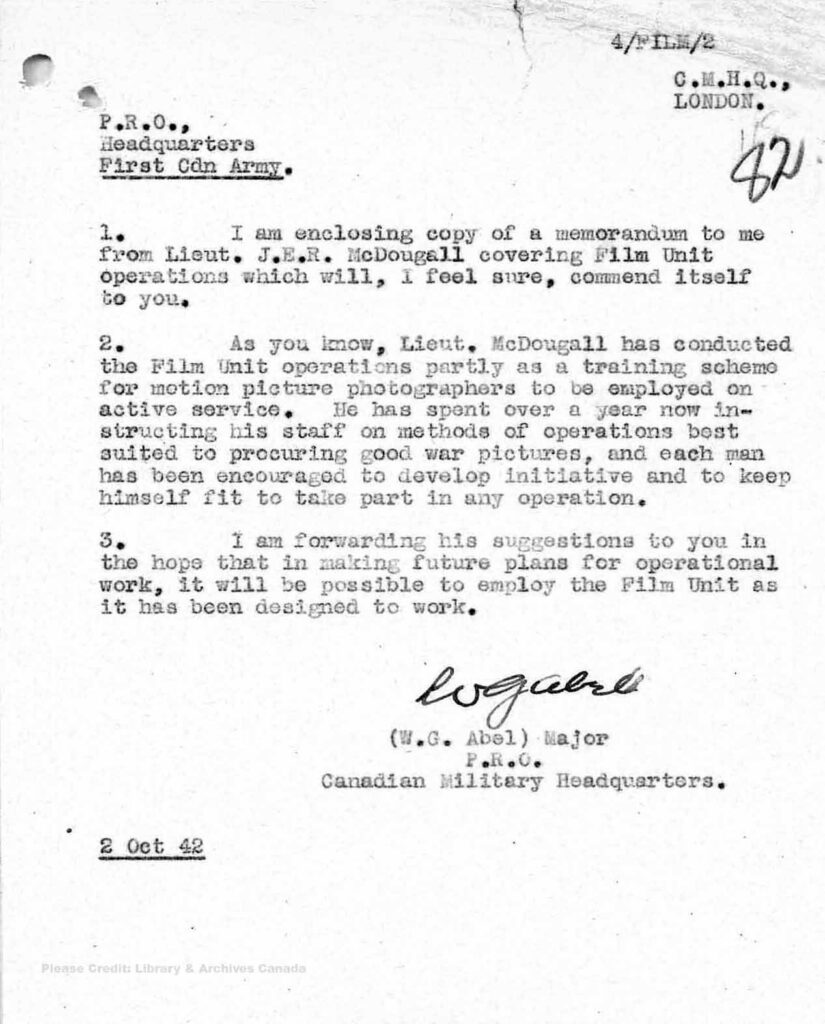
In response, Major Abel forwarded the September 30th Memorandum, from Lieut. J.E.R. McDougall, to P.R.O Headquarters;
“I am forwarding his suggestions to you in the hope that in making future plans for operational work, it will be possible to employ the Film Unit as it has been designed to work.” – Major Abel
After a full year of activity, the Canadian Army Film Unit presents this report from October 2nd, 1941 to October 2nd, 1942;
“NOTE: In addition to M of I release, “WOOD FOR WAR and “MOTORCYCLE TRAINING” were dubbed into several languages for distribution in South America, Russia, Middle East and neutral countries. They were also shown to Canadian troops in England, and were sent to Canada.” – J.E.R. McDougall
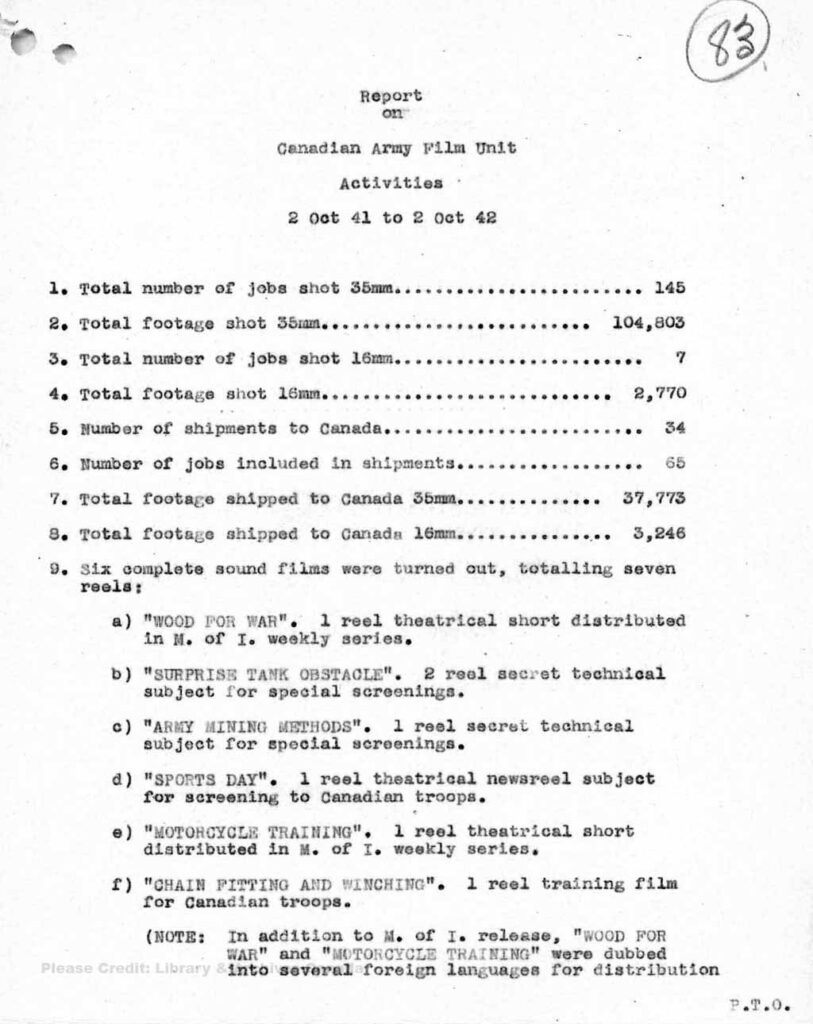
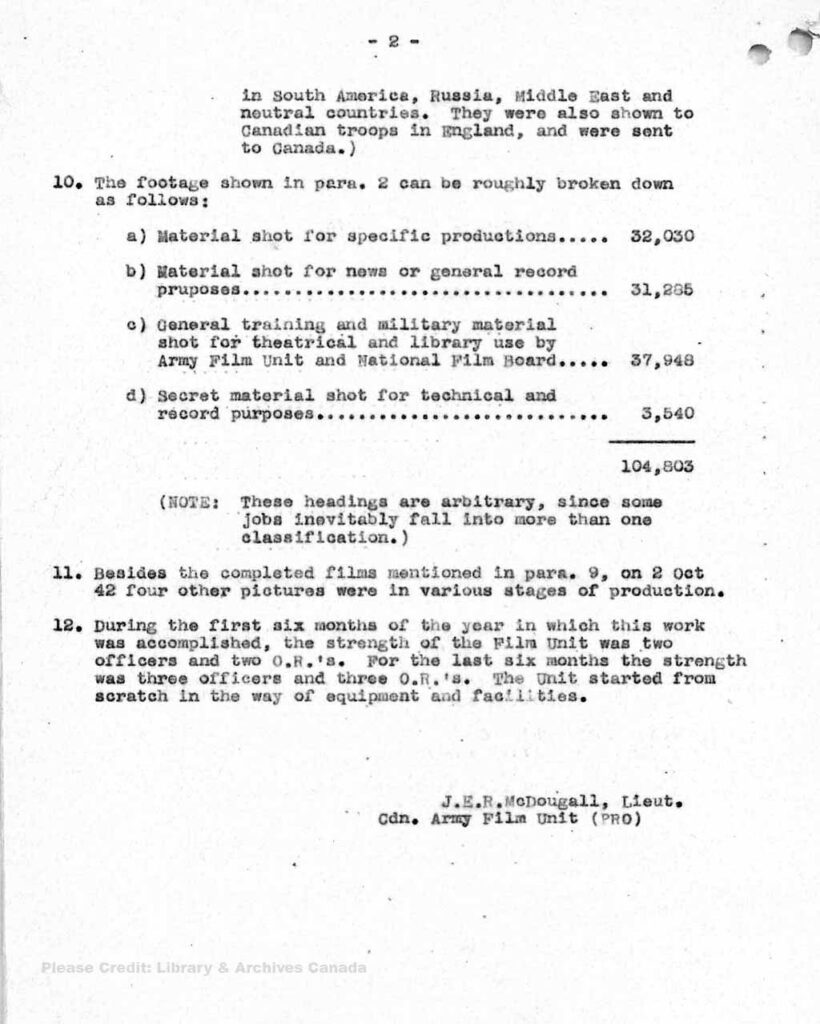
Frustrated after sixteen months of preparing the Film Unit for operational work, Lieut. J.E.R. McDougall, writes to the P.R.O. head office to present a plan to fill the needs of the Canadian Army.
“Speaking strictly from a Film Unit point of view, the proposed P.R.O. War Establishment now under consideration can only be regarded as an interim measure. It is hopelessly inadequate; only slightly less so than our W.E.” – Lieut. J.E.R. McDougall
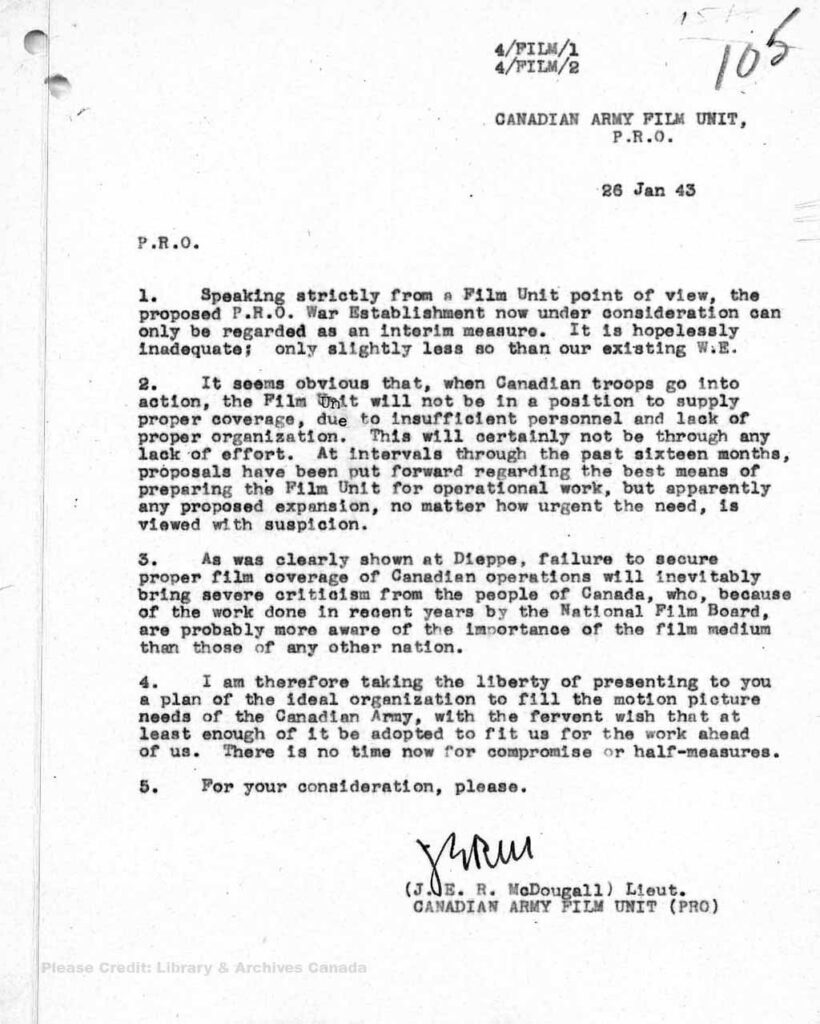
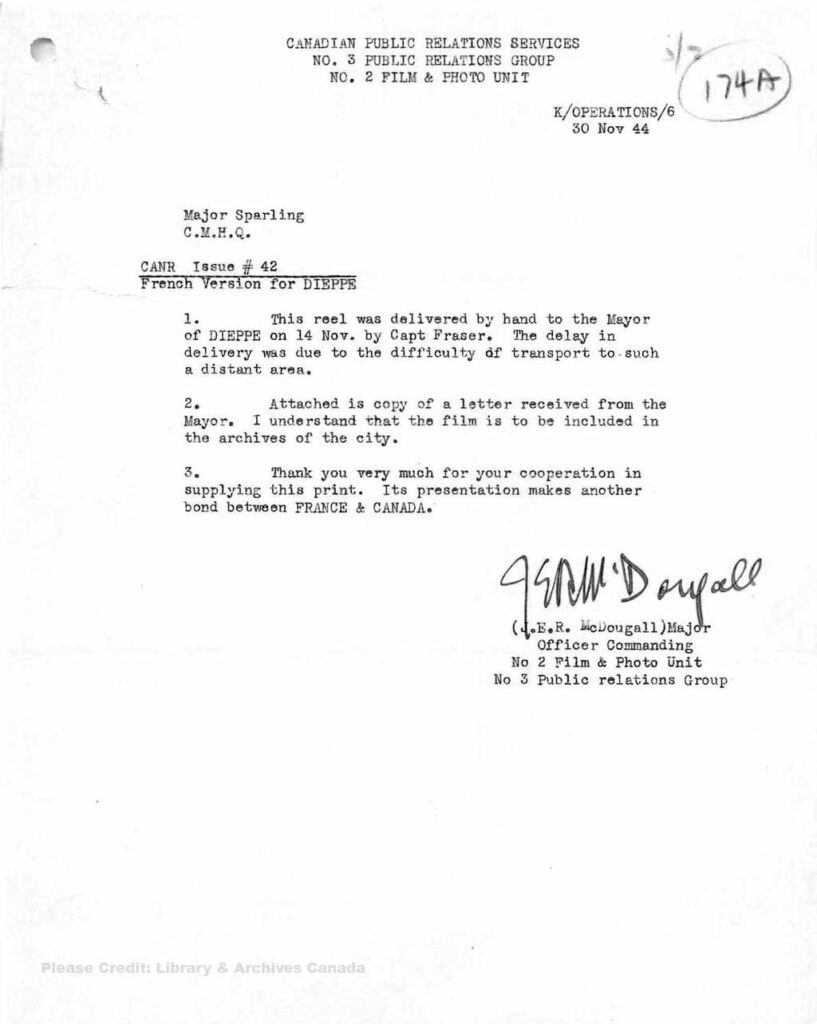
In a letter addressed to Major Sparling, from now Major J.E.R. McDougall, a French version of the Canadian Army Newsreels story on Dieppe (Issue no. 42) was made in French, and presented to the Mayor of Dieppe, on the 14th of November, 1942 by Capt. Fraser of the CFPU.
November 15th, 1944 – Letter from Le Maire, Ville de Dieppe to Major McDougall, Officer Commanding, No. 2 Film & Photo Unit/No. 3 Public Relations Group, Canadian Public Relations Services.
An English translation of the Mayor of Dieppe’s letter is provided in the Canadian Army Film & Photo Unit’s inter-office publication, ‘The Viewfinder’
Lieut. Frank Royal, the only member of the Canadian Army Film Unit that participated in the Dieppe Raid, returned home to Canada in March 1944;
“Royal Lauds Canadian Feats in Italy Campaign.”
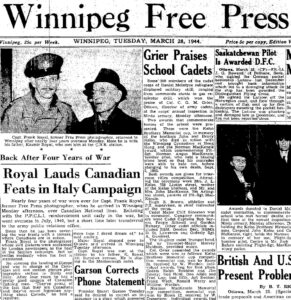
Canadian Army Newsreel Issue No. 42 – DIEPPE
DIEPPE 50TH ANNIVERSARY, 1992 ON-CAMERA INTERVIEWS: EXCERPTS
© RICHARD TOMKIES
For an excellent account of Operation Jubilee (Dieppe Raid), be sure to read Mark Zuehlke’s book,
Tragedy at Dieppe: Operation Jubilee, August 19, 1942

Lastly, closing here is an extract from Dan Conlin’s excellent publication on the history of the Canadian Army Film & Photo Unit, “War Through the Lens”.
Dan had the opportunity to interview several members of the Canadian Army Film Unit, and has kindly allowed me to reproduce both accounts here as told by Al Fraser and Alan Grayston upon hearing the news that the Film Unit would not be assigned to cover Operation Jubilee (Dieppe Raid);
Extract from, War Through the Lens by Daniel Conlin, Sept. 1, 2015 – ISBN-10 : 1927079373 / ISBN-13 : 978-1927079379;
“Al Fraser recalled the affair in a soldierly way: “He got drunk as a lion. Jack McDougall and I were sitting in Jack’s office and Alan came in and took his revolver and went poom, poom, poom through the plate glass doors. With that, the provost [military police] got him and he became Private Grayston for a while! And General Montague, who was a great man, he let him back. For 30 days or so he was a private and then he became a sergeant again. He was a great fellow and just an excellent cameraman, practically born with a camera in his hand.”
As for Alan Grayston, he remembered the event with chagrin. “I guess I got a little excited. I paid for the damage of course.”
For more on Dan Conlin’s book launch, please visit,
For copies of the book, please contact the Pier21 Gift Shop HERE.
© Dale Gervais 2021
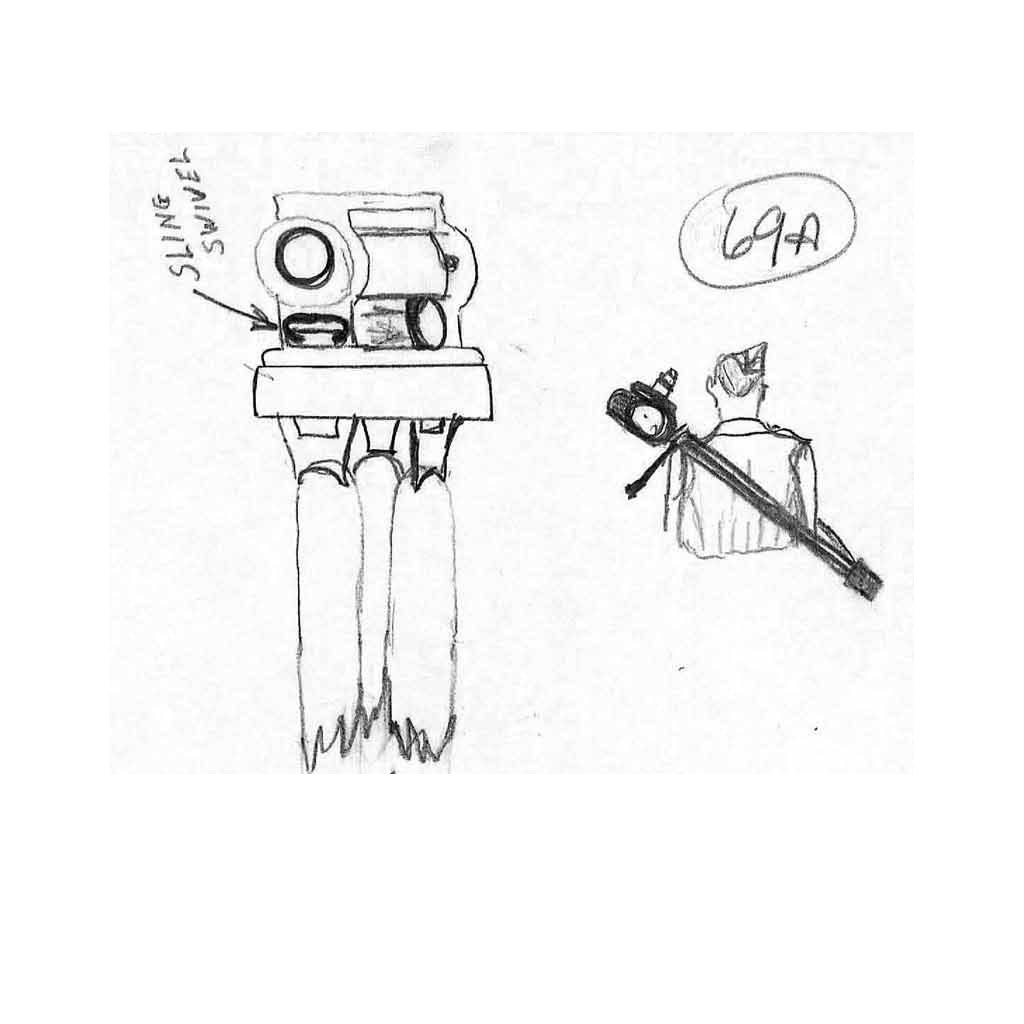
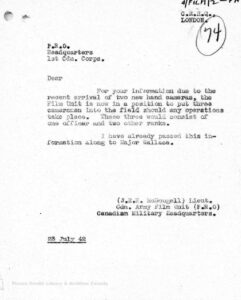
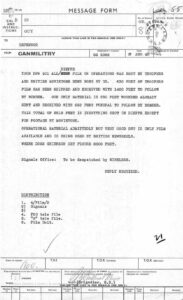
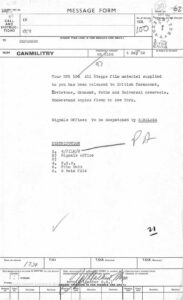
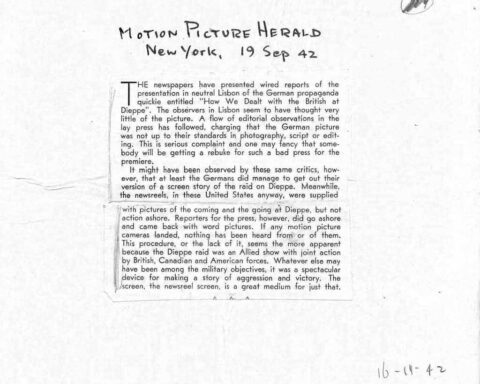
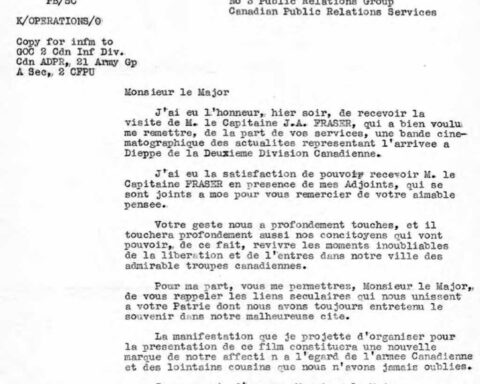
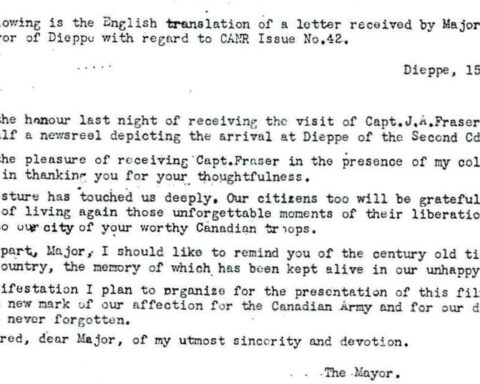





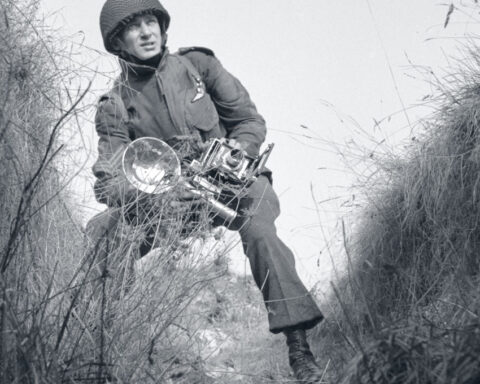
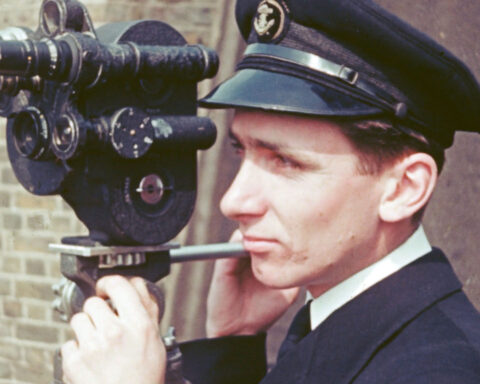

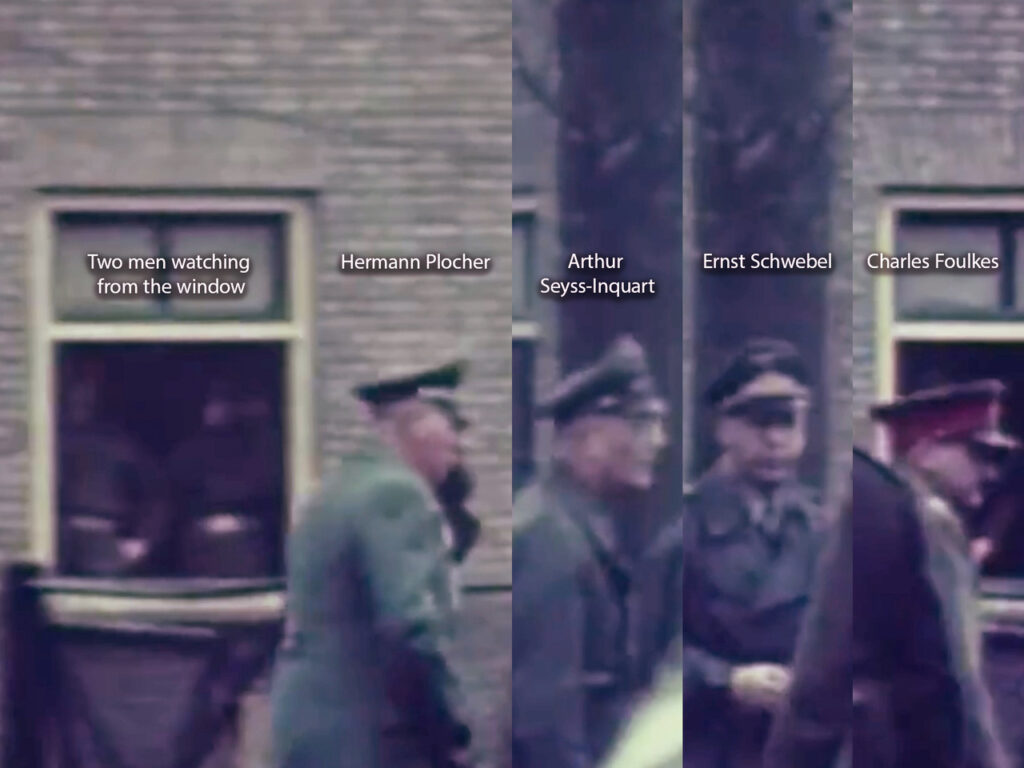
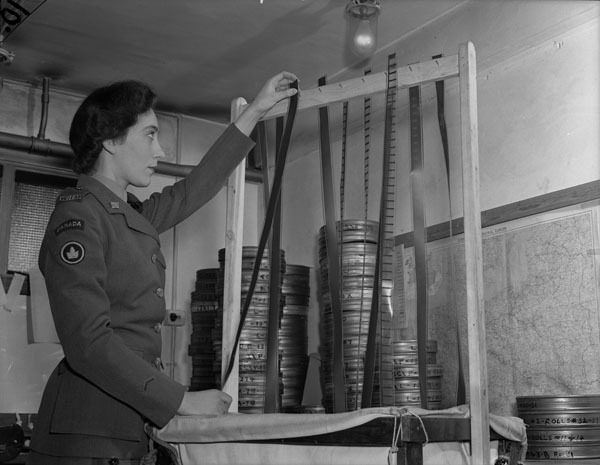
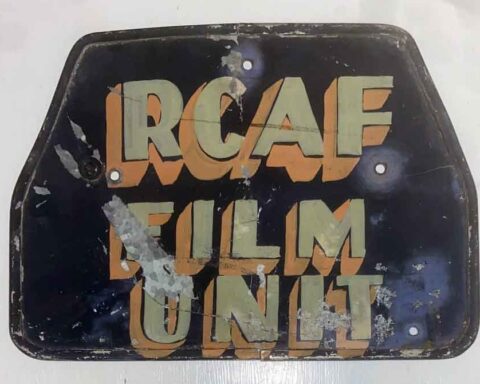



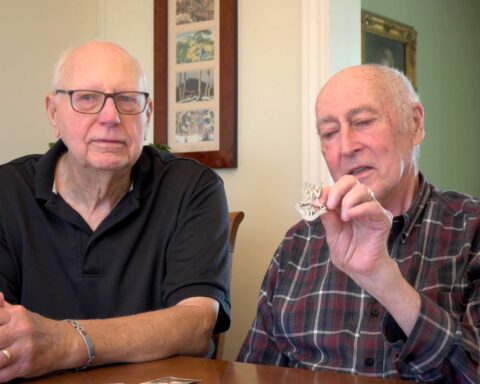
Hi Dale. Such an informative, valuable, well-organized website! My own search for more details re the Dieppe raid (w focus on RCNVR/Combined Operations) includes perusing microfilm, online newspapers, etc., and The Winnipeg Tribune (online) printed an article re Lt. Frank Royal on August 28, 1942 (I will send by email; comment box does not appear to allow attachments). I have yet to find a photo of/by him but the article provides some details re Aug. 19th, 1942, where he was during the raid, why he didn’t reach the shore…
That you helped to preserve valuable WWII photographs and film is an amazing feat. And sharing, awesome. (My WWII site re RCNVR/Comb.Ops is perhaps connected to a similar motivation). GH